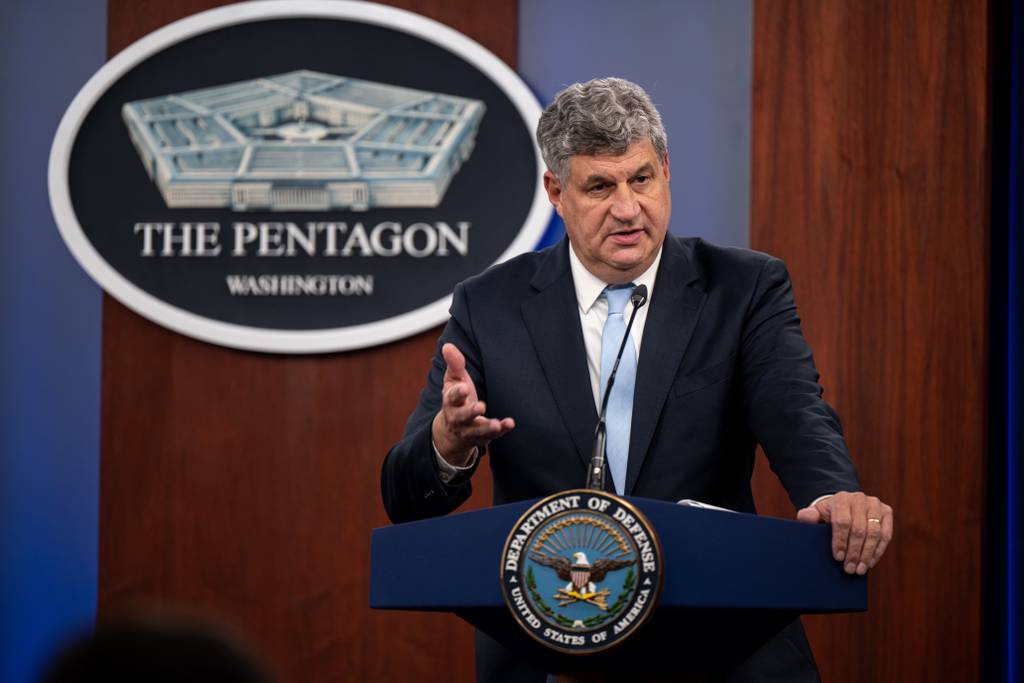Editor’s note: This story has been updated to include information from Pentagon officials.
WASHINGTON — America’s defense industry needs “generational” change to keep pace with competitors like Russia and China.
This is the Pentagon’s assessment in its first-ever National Defense Industrial Strategy, arriving at a moment of extreme demand. The U.S. is supporting partners threatened abroad — including Ukraine, Israel and Taiwan — forcing careful management of American aid and readiness.
“This strategy is about balancing the tension points,” said Halimah Najieb-Locke, the Pentagon’s acting deputy for industrial base policy, in a briefing with reporters.
The document is a self-described “call to action,” with almost 50 pages of recommendations to build a “fully capable 21st century” defense sector. It features the Pentagon’s most up to date thinking on the health of its suppliers, stretched thin after Russia’s invasion of Ukraine and the disruptive COVID-19 pandemic. America still builds the best weapons in the world, the strategy says, but that alone isn’t enough in a more competitive world.
The U.S. “must have the capacity to produce those capabilities at speed and scale to maximize our advantage,” it says.
That advantage may be narrowing in part because of America’s main competitor. In the last 30 years, the document says, China “became the global industrial powerhouse in many key areas — from shipbuilding to critical minerals to microelectronics.” China’s capacity, the document says, in some cases surpasses that of America and its allies in Asia and Europe.
Still, Cynthia Cook, a defense industry expert at the Center for Strategic and International Studies think tank, says China’s advances are only part of what’s motivating this work.
“I would not say that that’s the entire purpose ... behind the strategy,” she said.
Instead, Cook said, the document is meant to be the summit of more than six years of Pentagon work. Former President Donald Trump ordered the Defense Department to review its industrial base early in his term, leading to a report issued in 2018. Since then, more reviews have followed, including one on supplier competitiveness.
“All of these factors together make it fairly clear that it’s time for a rethink of how the department manages industry,” said Cook. “Without a strategy, it’s going to be one-offs here and there.”
The document is split into four sections, focusing on supply chains, workforce, Pentagon acquisition and the American economy overall. There are more than two dozen recommendations, which include diversifying the Defense Department’s suppliers, training more workers for industry-related careers, increasing commercial acquisitions and sharing more technology with U.S. partners.
Neither the problems nor the remedies listed are new. They aren’t meant to be, said Cook. The value of the strategy, she said, is its ability to coordinate industrial base work across the Pentagon, including in the services.
“Part of this strategy is really marshaling a lot of what we’ve already been doing within the department,” said Assistant Secretary of Defense for Industrial Base Policy Laura D. Taylor-Kale, also speaking at the briefing.
Specifically, she referenced a map of the supply chains for 110 different weapons systems the Pentagon has been developing since November. This map, added Najieb-Locke, will help find links further down the supply chain that are particularly brittle — whether due to approaching obsolescence or being a single point of failure.
Speaking at the Reagan National Defense Forum in December, Undersecretary of Defense for Acquisition and Sustainment Bill LaPlante said the document is also meant to be a broader signal to industry.
Najieb-Locke elaborated on that point Thursday. On one end, the strategy is meant to signal longer-term commitment to its current suppliers by putting the department’s goals in writing. On the other, it affirms that the Pentagon needs to work more with non-traditional companies, particularly those in the innovation space.
“We’re answering the industry’s call for consistent demand signal by organizing ourselves and targeting our efforts,” she said.
Despite that, some former defense officials and analysts who spoke with Defense News were skeptical of the strategy’s value. Heidi Peters, a defense industry expert at the RAND Corporation think tank, questioned why there needed to be a new strategy when the Pentagon already publishes so much literature on industry.
David Berteau, president of the Professional Services Council, which represents government contractors, said the strategy was a good “first step,” but he wants to see more attention paid to sustaining systems rather than just buying them.
Even more, Berteau said he was focused on how the strategy would be implemented, something he said is “more important than the strategy itself.”
While reshaping the defense industry may take a generation, the document said, it has shorter-term goals for the next three to five years. The Pentagon expects to publish an unclassified implementation plan in February — and a classified one later in March, said the officials briefing Thursday.
The classified plan will focus on many of the existing authorities the Pentagon has, such as the Defense Production Act, which Taylor-Kale said are “underutilized.”
The implementation plan will feature a list of priorities and metrics to gauge the strategy’s success, said Najieb-Locke. One of those priorities in the next five years is to create a faster and more stable supply of “long lead items,” which slow production, she said. To do so, she added, the department will have to better track its lower-tier suppliers, who sometimes don’t even know their work is supporting the Pentagon.
That need makes it more important for the Defense Department to continue speaking with partners across the government and in industry, Taylor-Kale said.
“We’re not going to come out of our our offices, so to speak, talk to people in and then go back in and shut the door,” she said. “We’re continuing the conversation.”
Noah Robertson is the Pentagon reporter at Defense News. He previously covered national security for the Christian Science Monitor. He holds a bachelor’s degree in English and government from the College of William & Mary in his hometown of Williamsburg, Virginia.








